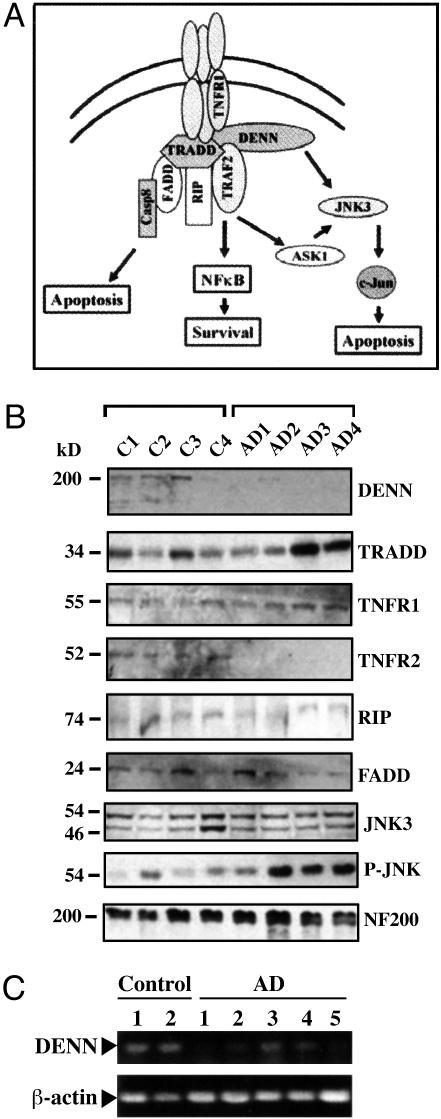Fig. 2.
Western analysis of TNF-α pathway components in control versus AD hippocampus. (A) Diagram of DENN interactions with the TNFR1 signaling pathway. DENN binds to TNFR1 and TRADD, whereas TRADD binds to TNFR1 and recruits TRAF2, RIP, and FADD. Further activation leads to apoptosis via caspase-8, survival via NF-kβ, or activation of JNK through apoptosis signaling kinase (ASK1). DENN also binds to JNK3 and may affect JNK-mediated apoptosis. (B) Western blotting of tissues from four age-matched controls and AD patients. Hippocampal homogenates (50 μg per lane) were analyzed by 4–15% gradient SDS/PAGE, transferred to a poly(vinylidene difluoride) membrane, and probed with antibodies specific for DENN, TRADD, TNFR1, TRAF2, RIP, JNK3, P-JNK, and NF200. Anti-DENN detects a specific band at 200 kDa, the predicted molecular weight of DENN, which is reduced in AD hippocampus. Increased expression of the 34-kDa TRADD protein and the 55-kDa TNFR1 protein in AD contrasts with expression of RIP, FADD, and JNK3, which remain constant in both control and AD tissues. TRAF2 expression is similarly decreased in AD, whereas activated JNK (P-JNK) is increased and NF200 expression remains constant, suggesting neuronal distribution is similar in both control and AD. (C) RT-PCR of total RNA pooled from the hippocampi of two age-matched controls and five AD patients were amplified by using primers specific for DENN or β-actin. The amplified product is a 452-bp region spanning the N-terminal region of DENN. DENN mRNA is significantly reduced in AD hippocampus, whereas β-actin levels are constant.

